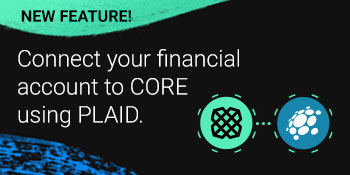TROPION-PanTumor03 Phase 2 Trial Shows That DATROWAY, Jointly Developed And Commercialized By Daiichi Sankyo And AstraZeneca, Reveals Promising Tumor Responses in Patients with Metastatic Urothelial Cancer in TROPION-PanTumor03 Phase 2 Trial; A Confirmed Objective Response Rate Of 68.2% And A Disease Control Rate Of 95.5% Was Observed In Previously Untreated, Cisplatin Ineligible Patients
Author: Benzinga Newsdesk | October 17, 2025 10:13am
Initial results from one sub-study of the TROPION-PanTumor03 phase 2 trial showed that DATROWAY® (datopotamab deruxtecan) plus rilvegostomig showed promising tumor responses and disease control as first-line and second-line combination therapy in patients with locally advanced or metastatic urothelial cancer. These results were presented today as a mini oral session (3072MO) at the 2025 European Society for Medical Oncology (#ESMO25) Congress.
DATROWAY is a specifically engineered TROP2 directed DXd antibody drug conjugate (ADC) discovered by Daiichi Sankyo (TSE: 4568) and being jointly developed and commercialized by Daiichi Sankyo and AstraZeneca (NASDAQ:AZN). Rilvegostomig is AstraZeneca's PD-1/TIGIT bispecific antibody.
In a sub-study of patients with locally advanced or metastatic urothelial cancer, DATROWAY plus rilvegostomig was evaluated in both the first-line and second-line treatment settings. As first-line treatment for patients not eligible for cisplatin (n=22), DATROWAY plus rilvegostomig demonstrated a confirmed objective response rate (ORR) of 68.2% (95% confidence interval [CI]: 45.1-86.1) and a disease control rate (DCR) of 95.5% (80% CI: 83.4-99.5). Median progression free survival (PFS) was not reached in the first-line setting and the PFS rate was 73.5% (95% CI: 46.5-88.4) at 12 months. As second-line treatment for patients who previously received platinum-based chemotherapy and no prior treatment with immunotherapy (n=18), DATROWAY plus rilvegostomig demonstrated a confirmed ORR of 38.9% (95% CI: 17.3-64.3) and a DCR of 83.3% (80% CI: 66.6-93.7). Median PFS was 12.5 months (95% CI: 4.2-NR) and the PFS rate was 60.0% (95% CI: 33.7–78.7) at 12 months. Median duration of response (DoR) was not yet reached in either setting.
"Despite recent advances in the treatment of metastatic urothelial cancer, there are limited treatment options in both the first-line and second-line settings and many patients still experience disease progression after first-line therapy," said Sun Young Rha, MD, Department of Internal Medicine, Yonsei Cancer Center, Yonsei University College of Medicine, Seoul, Republic of Korea. "The response rates seen with TROPION-PanTumor03 across the first-line and second-line settings, including the disease control rate of 95.5% observed in the first-line setting, highlight the potential of datopotamab deruxtecan plus rilvegostomig and warrant further evaluation across lines of therapy."
The safety profile of DATROWAY plus rilvegostomig was consistent with the known safety profiles of each agent. Grade 3 or higher treatment-related adverse events (TRAEs) were observed in four of 22 patients (18.2%) receiving first-line treatment and in seven of 18 patients (38.9%) receiving second-line treatment. The most common grade 3 or higher TRAEs occurring in patients treated with DATROWAY plus rilvegostomig in the first-line (n=22) and second-line (n=18) settings, respectively, were increased amylase (13.6%, 16.7%), neutropenia (4.5%, 5.6%), stomatitis (0%, 5.6%), decreased appetite (0%, 5.6%) and anemia (0%, 5.6%). There was one (4.5%) interstitial lung disease (ILD) event adjudicated as drug-related in first-line and two (11.1%) in second-line setting with no grade 3 or higher ILD events observed.
Daiichi Sankyo has initiated the TROPION-Urothelial03 phase 2/3 trial evaluating DATROWAY plus platinum-based chemotherapy compared to gemcitabine and platinum-based chemotherapy in patients with metastatic urothelial carcinoma following progression during or after treatment with enfortumab vedotin in combination with pembrolizumab.
"The five-year survival rate for patients with metastatic urothelial cancer remains very low, underscoring the urgent need for new therapeutic options in this difficult-to-treat population," said Abderrahmane Laadem, MD, Head, Late-Stage Oncology Development, Daiichi Sankyo. "These results from TROPION-PanTumor03, coupled with results from TROPION-PanTumor01, support further clinical development of DATROWAY in urothelial cancer and we have initiated the TROPION-Urothelial03 phase 2/3 trial, our first pivotal trial outside of breast and lung cancer."
"These initial TROPION-PanTumor03 results offer further support for our strategy of combining the potency of DATROWAY with the dual PD-1 and TIGIT blockade of rilvegostomig to enhance patients' immune responses and ultimately, improve outcomes," said Leora Horn, MD, MSC, FRCPC, Senior Vice President, Late Development Oncology, AstraZeneca. "We are encouraged by the responses observed in patients with metastatic urothelial cancer and hope to further evaluate this combination in the early-line setting."
In TROPION-PanTumor03, patients were enrolled across seven sub-studies that evaluated DATROWAY as monotherapy or in combination with other approved or investigational cancer medicines. In a sub-study evaluating patients with locally advanced or metastatic urothelial cancer (sub-study 6, cohort 6B [n=40]), patients received DATROWAY in combination with rilvegostomig in either the first-line setting (cisplatin ineligible patients with no prior systemic therapy, or progression more than 12 months after neoadjuvant or adjuvant therapy) or the second-line setting (previous platinum-based chemotherapy in the locally advanced or metastatic setting, or progression less than 12 months after platinum-based neoadjuvant or adjuvant therapy). Of the second-line patients who were not previously treated with immunotherapy (n=18), six had previous treatment in the adjuvant or neoadjuvant setting with progression within 12 months and 12 had been treated in the metastatic setting. Median duration of follow-up was 10.8 months and 9.7 months in the first-line and second-line setting, respectively.
Posted In: AZN




